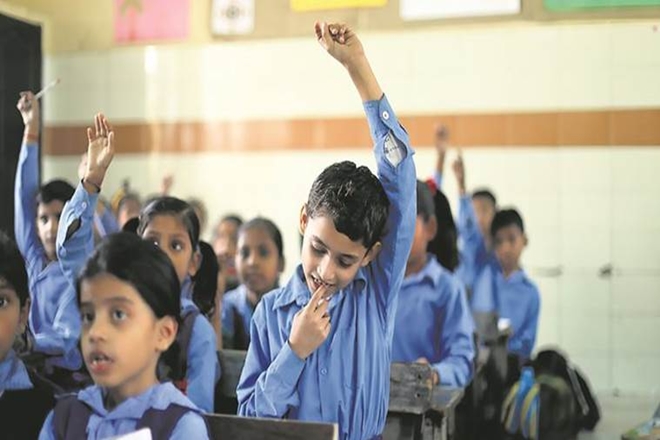The Annual Status of Education Report (ASER) 2018, published by Pratham, one of the largest non-governmental organizations in the country is out. There are many encouraging findings and there are also areas where the government needs to do more. The number of children from class 5 who can read class 2 textbook has crossed the halfway mark (50.5 percent) up from 46.9 percent in 2012. The performance of children in primary schools (1 to 5) is still way below to a satisfactory level but there is a substantial improvement in reading and math skills. The most important achievement is that this improvement is led by government schools.
The number of children who can perform a simple division has gone up from 24.09 percent in 2012 to 27.9 percent in 2018. For class 3 school children, the ability to read class 2 textbook has increased to 27.2 percent in 2018 from 19.5 percent in 2010. The states of Himachal Pradesh, Uttar Pradesh, Odisha, Chhattisgarh, Karnataka, Kerala, Mizoram and Arunachal Pradesh has recorded more than 5 percentage improvement in reading and math skill from 2016 level.
In the state of Chhattisgarh, class 5 reading level has improved to 59.6 percent in 2018 from 56 percent in 2016, 3.6 growth in just 2 years. The interesting thing is that government schools were responsible for this turnaround in the state. The government schools recorded an improvement of 6.1 percent while the private schools plummeted by 5.7 percent. This is a great achievement for the former chief minister of the state Raman Singh who governed the state for one and a half decade. Raman Singh invested heavily in the education sector with special focus relatively deprived tribal and rural areas.
Wilima Wadhwa, director, ASER Centre said that these are “very welcome” developments. “In some states like Punjab and Maharashtra, we already knew that the state governments were undertaking learning programmes but the growth registered by government schools in states such as UP was unexpected,” said Wadhwa. The government schools in Uttar Pradesh witnessed substantial improvement in reading and math skills. The reading skills in government schools improved by 11.9 percent in comparison to 7.6 percent in private schools. This is a huge encouragement for Yogi Government which brought some tough reforms in primary education policies of the state including the implementation of National Council of Education Research and Training (NCERT) syllabus in schools. It seems that Yogi Government has passed in the exam of reforming the primary education in the state which was in a terrible state due to policies of Akhilesh Yadav and Mayawati.
Wadhwa attributed the significant improvement in learning level at primary schools to the government efforts to “own learning”. The previous government brought the Right to Education Act but it confused the education with building boundary walls. The government has now changed its focus from building boundary walls to outcome-based learning. “When we did our first ASER in 2005, nobody spoke about learning. Then the Right to Education came and the focus shifted to enrollment and infrastructure — playground, boundary wall, etc. But now, there is a concerted effort in several states. Punjab, for instance, has the Padho Punjab programme that follows Pratham’s model of teaching at the right level. Delhi has been doing a lot of very good work. The pendulum has swung in the direction of learning,” said Wadhwa.
ASER is an annual household survey and it covered 5.46 lakh children in 596 rural districts across the country.
